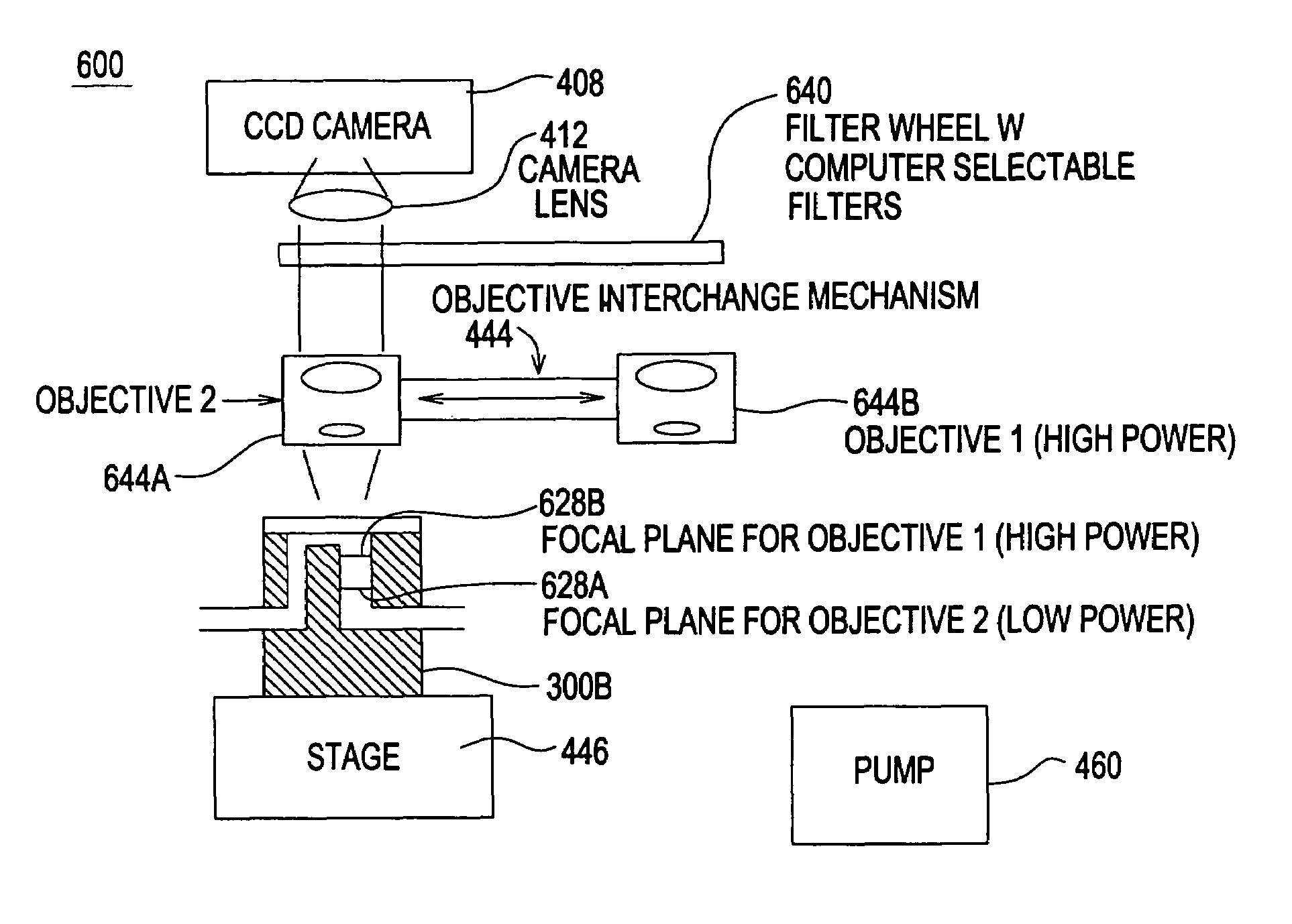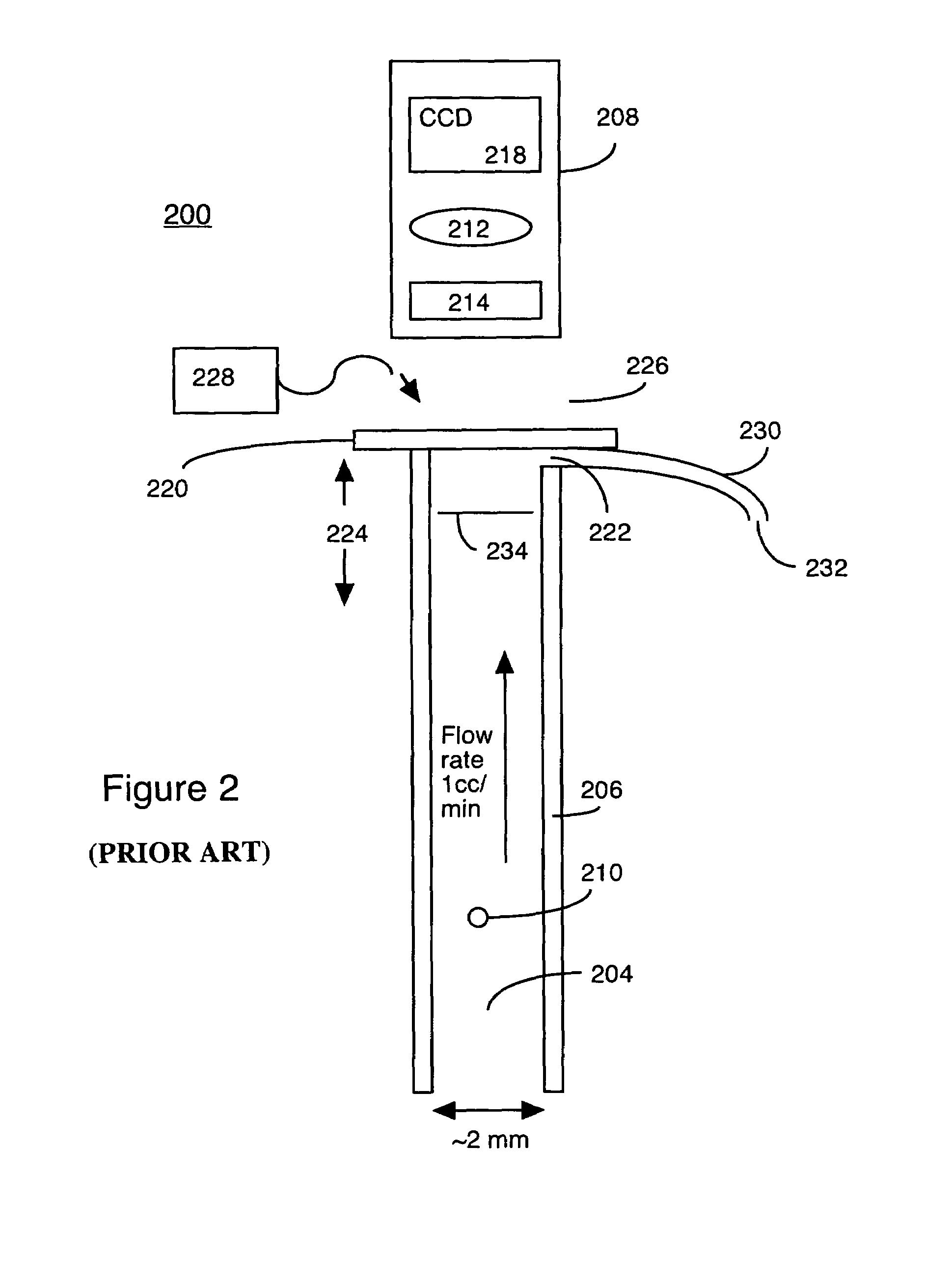High resolution imaging fountain flow cytometry
a flow cytometry and high resolution technology, applied in the field of high resolution imaging fountain flow cytometry, can solve the problems of unsatisfactory sensitivity, high cost, and the like, and achieve the effects of high resolution, high throughput, and high resolution
- Summary
- Abstract
- Description
- Claims
- Application Information
AI Technical Summary
Benefits of technology
Problems solved by technology
Method used
Image
Examples
Embodiment Construction
[0047]The present invention includes apparatus and methods for high resolution imaging of fluorescent particles in a fountain flow cytometry set up. (A precursor invention, described in U.S. patent application Ser. No. 10 / 323,535 by the present inventor, is shown in Prior Art FIGS. 2 and 3. This previous invention incorporates detection, but not high resolution imaging.) To review the flow cytometry detection process, a flow channel defines a flow direction for samples in a flow stream and has a viewing plane nearly perpendicular to the flow direction. A clear volume between the illuminated flow volume and the imaging optics is provided in some embodiments. A beam of illumination is formed as a column having a size that can effectively cover the viewing plane, and illuminates the flow end on or nearly end on. Imaging optics are arranged to view the focal plane to form a low-resolution image of the multiple fluorescent sample particles in the flow stream. In this step, particles of i...
PUM
| Property | Measurement | Unit |
|---|---|---|
| diameter | aaaaa | aaaaa |
| distance | aaaaa | aaaaa |
| transparent | aaaaa | aaaaa |
Abstract
Description
Claims
Application Information
 Login to View More
Login to View More - R&D
- Intellectual Property
- Life Sciences
- Materials
- Tech Scout
- Unparalleled Data Quality
- Higher Quality Content
- 60% Fewer Hallucinations
Browse by: Latest US Patents, China's latest patents, Technical Efficacy Thesaurus, Application Domain, Technology Topic, Popular Technical Reports.
© 2025 PatSnap. All rights reserved.Legal|Privacy policy|Modern Slavery Act Transparency Statement|Sitemap|About US| Contact US: help@patsnap.com



